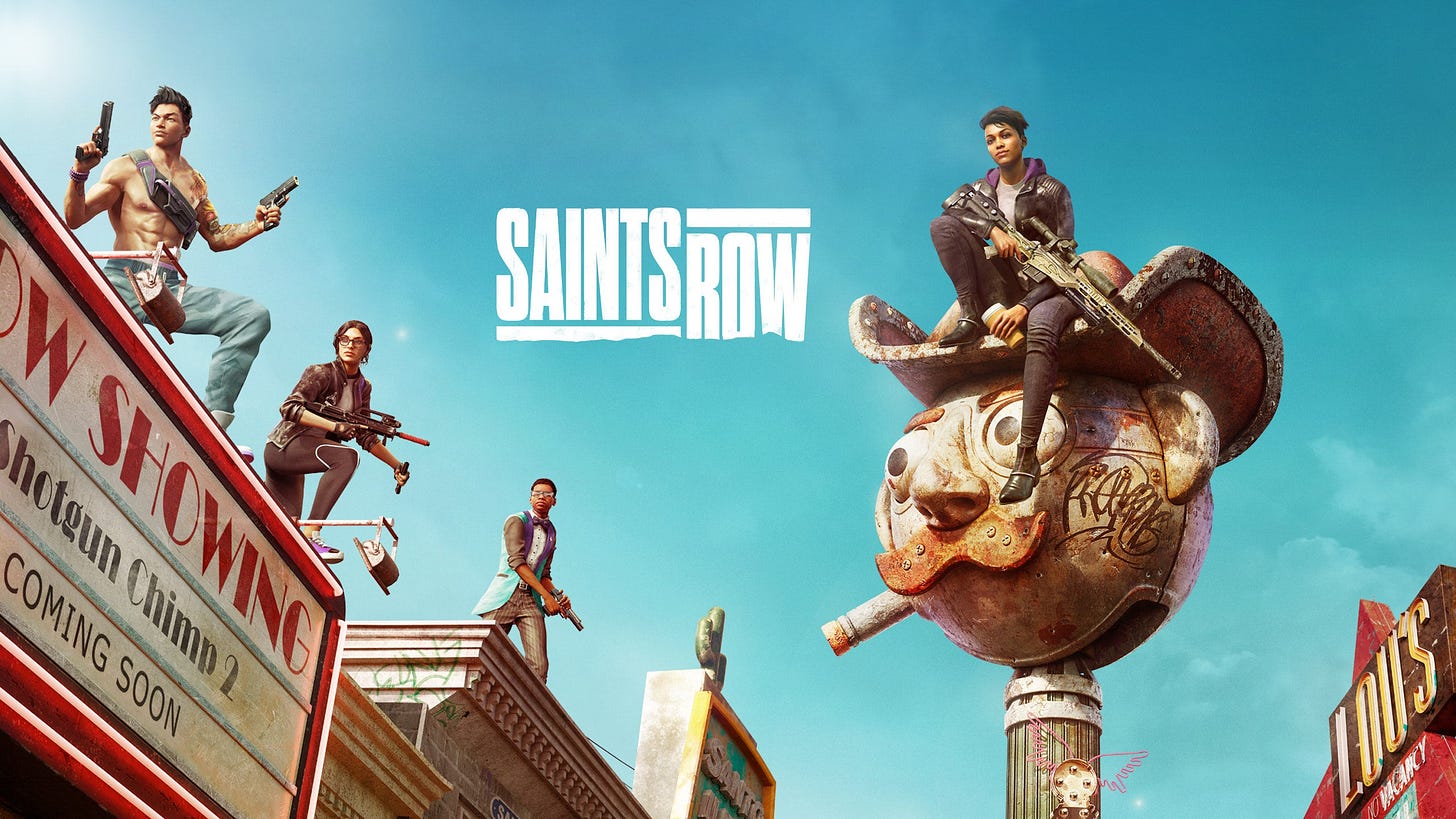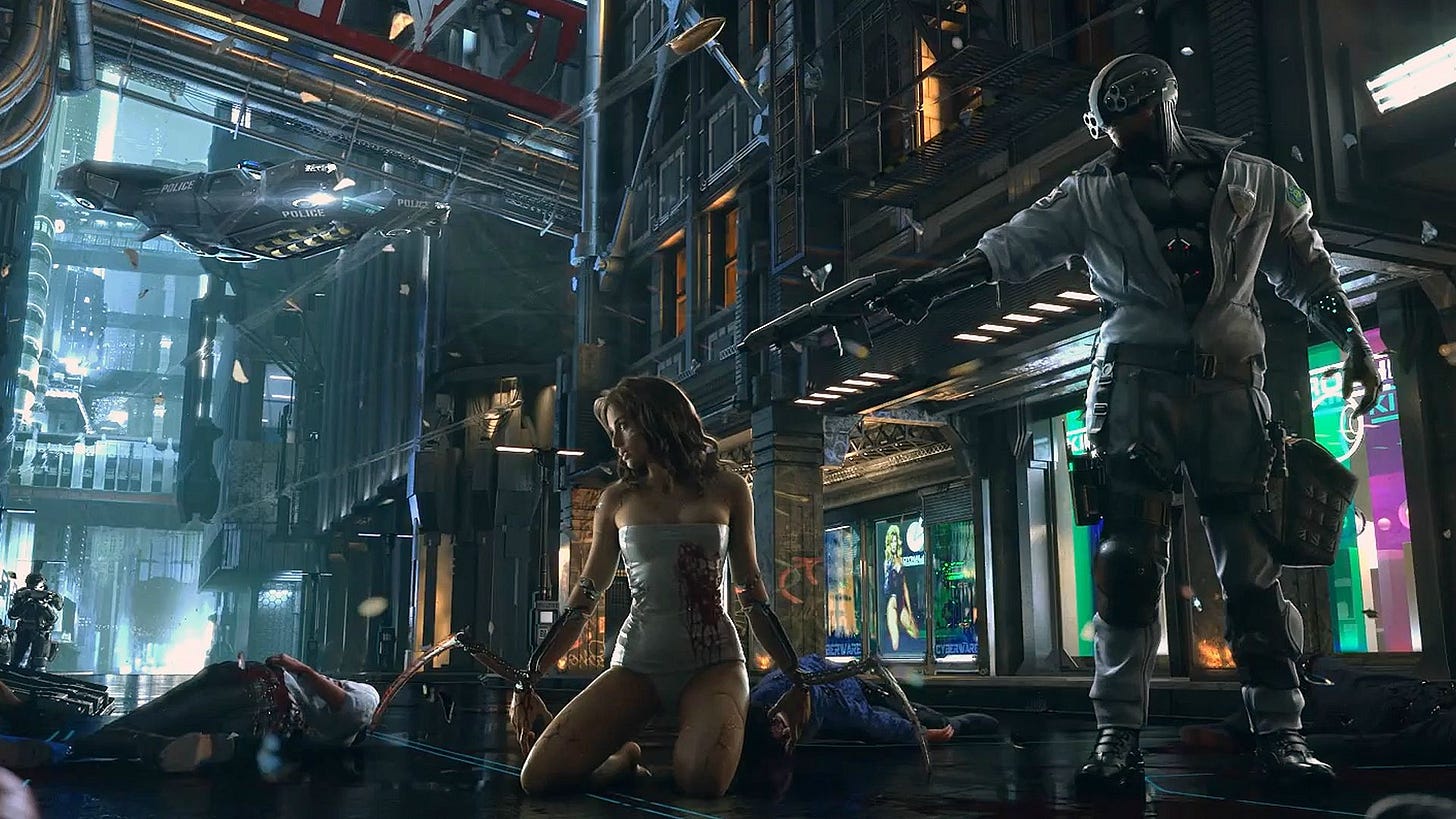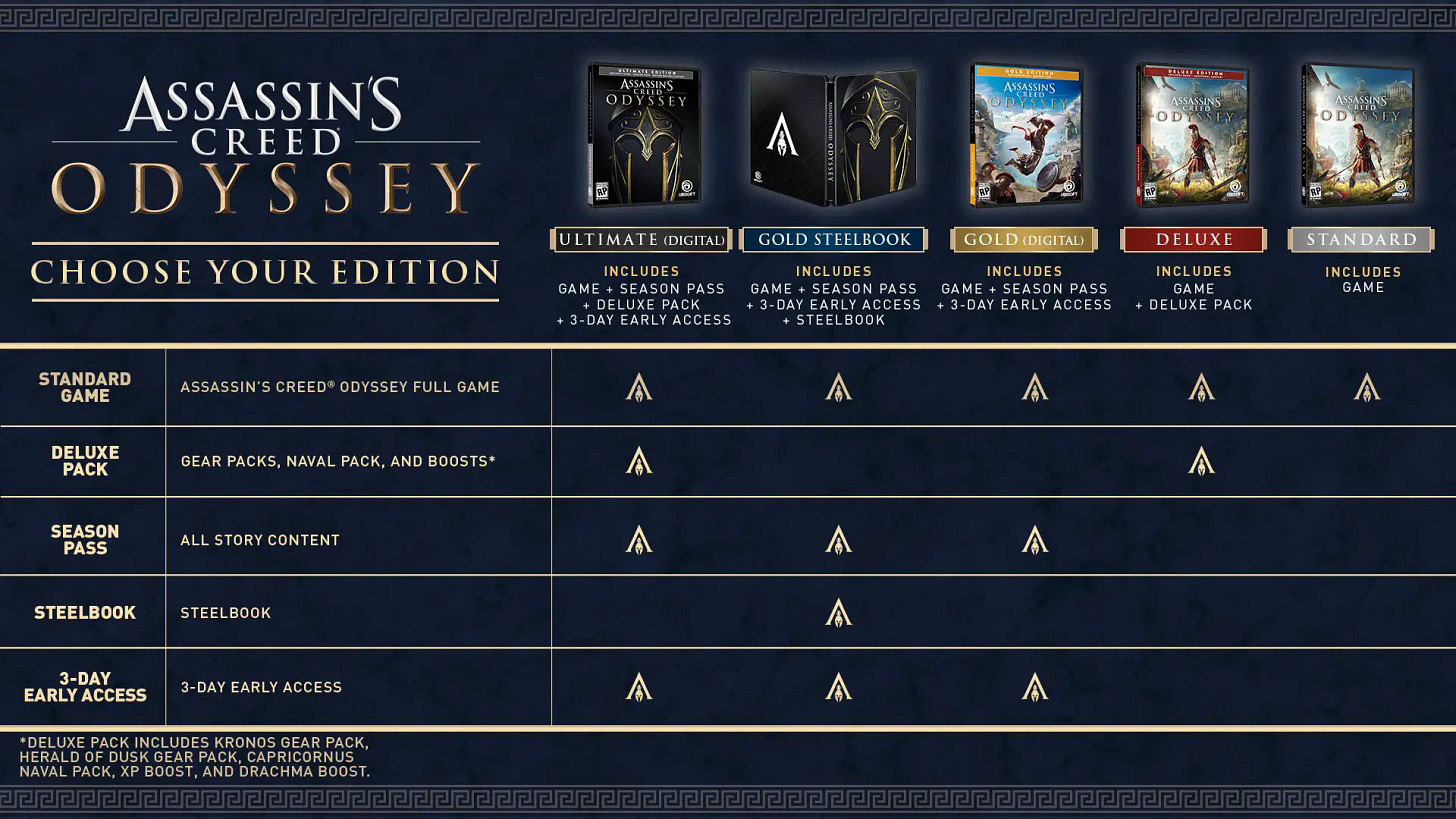The combined accelerations of a mass gaming culture, advancements in computer hardware and the rapid growth of the videogame industry itself have increased in the prominence of a subclass of game that is defined by overproduction and disposability. While the existence of big budget videogames which offer middling one-off experiences isn’t a recent development it is something we’re seeing with a growing frequency as the consumer base for the hobby continues to expand.
We’re in an age of reboots, remakes and remasters in a post-nerd world and if there’s anything that the last decade’s worth of pop media has demonstrated it’s that nostalgia is as potent as any drug and it can be utilized to an almost terrifying degree of effectiveness. I’m not going to pretend like videogames were objectively better in the 2000s because that’s when I grew up with them, but I can’t help and notice the current trends within AAA gaming specifically and wonder if things are already far enough in a direction that we’ve already seen time and time again in other forms of media.

“Don’t judge a book by its cover.” It’s a simple and agreeable idiom that we learn as children and I’d argue that it’s a lesson that every developing child should take to heart. The ability to discern the quality of a work – art or otherwise – is something that’s developed with experience and it’s important to have a well-rounded education as a participant of any artform, to turn down a new experience is to turn down an opportunity to gain new insight into the world around you and to grow as an individual. This is also how we form biases that help us avoid negative experiences in the future while seeking out more positive ones. An important part of growing up is developing your own tastes and to make informed decisions is an ongoing aspect of the adult experience. Try and think back to the first videogame you ever played that made you say “…this sucks.” How old were you at the time? Young enough to be considered a child, sure, but old enough to have partook in the hobby long enough to know which games could be passed by. Certain games just had that look – whether they were the movie tie-in of the 2000s or the live service MMO experience of the 2010s that was doomed to have its servers shut down before the decade’s end – a quick scan of the box art or a glimpse at a minute or two of gameplay was often enough to give a game’s quality away. A term popularized between the seventh and eighth generations of home consoles that’s been carried forward to today that I find semi-applicable here is shovelware: software that is churned out quick and cheap, often to cash in on a trend or to fill out a quota for some metric, like the size of a home console’s library, as an example. These are games that are known for being uninspired, cheap, janky and often stocked at the edge of the shelf at game stores – if they can even manage a physical release – and destined to wind up at the bottom of a donation bin in less than a year. If they’re lucky a YouTuber will make a video essay about them at some point otherwise they pass onto the next and final phase of their existence: abandonware.
On the opposite end of this spectrum are the AAA games: the industry’s equivalent of the blockbuster, of the chart-topper. Projects that are colossal in every aspect imaginable: budget, manpower, development time, scale, even down to the space that they digitally inhabit on our machines. They’re announced years in advance at major events and allowed to grow fanbases from early promises that could make any gamer’s heart flutter such as a vast open-world full of secrets to explore, a memorable choice-driven story with multiple endings or the option to customize the player avatar’s penis. Years go by and we get tidbits of information here and there: sleek CGI cinematics, carefully scripted gameplay trailers, a release date with no less than 3 editions of the game that come (in)complete with their own sets of trinkets and virtual rewards. Finally, the launch day rolls around and the long-awaited product goes up for sale, and then… that’s it. Maybe it’s really good, a solid outing by an up-and-coming studio or it’s a complete and utter flop that ends up universally panned. It doesn’t really matter that much in the end though because out of all the AAA games that release in a year only a handful of them are now able to be remembered down the road and this ratio is only growing as time goes on. These games hardly get their moment in the public eye before the next major release rolls around and we go through this entire cycle once again. What I find interesting then is how these unremarkable and forgettable experiences occur within the category of AAA titles: how could a game pumped full of polygons and dollars leave no impact whatsoever and completely drop out of relevancy in mere weeks?
Now one could argue that the underlying issue here is the frequency at which these major releases are hitting the market and that’s true to the extent that there are simply more games coming out these days. The industry has only grown with its consumer base and there’s no sign of it stopping anytime soon; playing videogames is just a thing we all do now, your mom plays Candy Crush Saga on her phone at work, your dad probably had a phase where he got really into flight sims. More games coming out means that there’s less time in the limelight for each new release but I still think that it goes a little deeper than that. As flashy as these games can be there is a flimsiness to them that once noticed cannot be ignored.
The discussion around crunch in the industry became unavoidable as more and more workers spoke up about their often harrowing experiences with trying to manage their work and their lives within these corporate environments. Entire careers were made and destroyed just to get these games out in order to meet a predetermined milestone; big wasn’t big enough and titles like Red Dead Redemption 2 required employees to sacrifice their time, their energy and their personal relationships to hit the holiday season release date. It all came to a head at the start of this decade with the rocky release of Cyberpunk 2077 in late 2020. Following their success with The Witcher 3 the hot new bad boys in Western AAA gaming were hailed as the successors to Rockstar Games for years and left alone to cook up their next major title: the RPG to end all RPGs. COMING: WHEN IT’S READY were the final words of the 2013 reveal trailer and what followed was a media tour backed by an audience which was ready to give everything they had to experience this game. It had it all from customizable armblades to the wholesome bearded guy from the John Wick movies. I was sold from the very first trailer and I had made it my goal to save up for a gaming PC as soon as I could. That was before it actually came out.
Cyberpunk 2077 releasing in the state it did may not have been predictable to everyone but it was inevitable that a game of this scale would butcher the landing at some point. It’s not the first time that this has happened and as we’ve seen in the last 3 years alone it certainly wasn’t the last either but what made this case such a hot topic for online discourse – as much as that’s worth – were the unique circumstances around the game’s production. CD Projekt were supposed to be the saviours of AAA and it was their God-given duty to revive the singleplayer RPG in a post-Gamergate landscape, or so the average gamer believed circa 2015-2019. They had kept the hype machine running at full speed from the moment the game was revealed all the way up to the day it came out and it was all fuelled with the goodwill that they had earned from the success of their previous title. I was too old at this point but I can imagine that this was the sort of game that kids would absolutely gush over on the playground; I say that because I saw adults doing the same thing on the internet. In the end CD Projekt Red weren’t as pro-gamer as we were lead to believe and the carefully threaded web of lies holding the game together had finally come undone but what should’ve ended in a unanimous shunning fizzled out over a month into a general acceptance for the way things were. The game and the company behind it had more than their fair share of issues but from the perspective of the consumer there wasn’t much that could be done other than to learn from the experience and be more mindful in the future. Turns out that gamers could hardly even manage that; CD Projekt Red ran damage control with promises of free updates and an anime tie-in complete with the ever-iconic lolibait all helping to redeem the game’s reputation to the most annoying of web-poisoned losers and gullible casuals. One last gasp of desperation before Cyberpunk 2077 went under the surface.

What even is the point of a decade’s worth of hype, controversies and disappointment if it all amounts to nothing? All that money and combined effort from hundreds of creative individuals funnelled into a single product that can only be described as painfully average, a game you buy on sale and play for a week before dropping it forever. And this is only the most well-known example of the last 3 years: Battlefield 2042, Grand Theft Auto: The Trilogy – The Definitive Edition, Pokémon Scarlet and Violet, The Callisto Protocol, that’s not even all of them. Like with all things time filters the notable from the forgettable and survivorship biases can lead us to believing that art was objectively superior in the past but to see games of this scale fall into the depths of the memory hole one after another in record time is genuinely demoralizing, it only indicates the future of this medium and the standards that we hold it to. A cynical read on this whole situation is that publishers and developers – let’s not act like they’re entirely blameless here – know that the naïveté of the average gamer will let them get away with releasing their products in an unfinished state. Day-one patches are no longer an anomaly, they’ve become the standard for every major release for at least the last decade and with the widespread acceptance and popularity of the live service format it’s not uncommon for a single game to be supported and updated with new content for years. That being said, it goes both ways here and rather than accepting this current state of the AAA world we should at the very least try and keep our impulses in line when it’s a matter of exchanging money for goods in a power system that’s inherently imbalanced in their favour. Seeing these games release in unplayable states and choosing to stick by them in hopes that their developers will turn their reputation around because the internet told you it happened with No Man’s Sky is not you being optimistic, you’re being exploited.
Of course these are some of the most extreme examples from recent years. I deliberately listed AAA titles that were broken at release – some still are – but that doesn’t mean that other games don’t also share that same sleaze. There’s a sort of dichotomy between art and content that’s only gotten more defined as social media pervades every aspect of our lives, on and off the net; art is forever and content is disposable. “Ninety percent of everything is crap” states Sturgeon’s law and the creatives who work on these games obviously deserve some slack, not everything is going to last the test of time. This doesn’t change the reality that an increasing percentage of games are actively designed to be forgettable, mediocre one-time experiences before being replaced by the next title in line, not succeeded by but entirely replaced. How else can we rationalize decisions such as putting a battlepass in a singleplayer game or shutting down a live service title after just 3 years? Micro-transactions are a grift, we know this already and battlepasses are merely a replacement for the now obsolete lootbox – the general market did manage to win that battle and the industry responded by swapping out gambling for a drip-feed designed to trap the highly profitable and expanding market of casual gamers in a cycle of addiction – so obviously the motivation here is to make more money in the end but there has to be a base level of integrity here, as corny and idealistic as that may sound. I can’t scold any individual developer here since I can sympathize with having to work on a doomed project in exchange for a step up in your career. Software development is demanding work and we’re all just trying to survive but when the end product of all that labour and those personal sacrifices is so expendable it makes me wonder if the AAA industry is a positive feedback loop that’s only accelerating towards a brick wall. That’s not to imply that the industry is going to crash anytime soon or anything – I’m no economist – but is this trend with AAA gaming a sustainable model? If they show us anything it’s that these studios will continue to debase themselves for even the most minor boost in profits and that their titles will continue to drift further away from the standard of quality they had once held themselves to. It’s why the Assassin’s Creed franchise completely dropped any regard for historical accuracy in recreating real places as virtual sandboxes with Assassin’s Creed Valhalla. It’s why Halo Infinite has been an ongoing disaster and 343 Industries managed to destroy almost all of the remaining goodwill it had with the series’ older fans. It’s why we’ve seen a slew of “new” games designed to shamelessly emulate the identities of iconic AAA titles of the past, games such as Back 4 Blood with Left 4 Dead and Atomic Heart with BioShock.

It can feel like we’re converging on a content-centric singularity where the line between AAA titles with genuine merit and this flavour of market-safe slop will disappear entirely and as long as these games continue to sell in record numbers that reality might just come sooner rather than later. There’s not a lot of space for the consumer to take a stand against these practices given how individualistic videogames and gaming can be in their nature but eventually it might even reach a breaking point and the medium could enter a renaissance of some sort, or maybe I’m just daydreaming about the future while I reminisce the past (I did say that it’s addicting). Until then expect to see more games mired in controversies, launch in broken states and forgotten entirely in less than a month past their release dates. These games will come and go, you should play the ones that matter to you, make informed decisions and hold your hobby to a higher standard.

